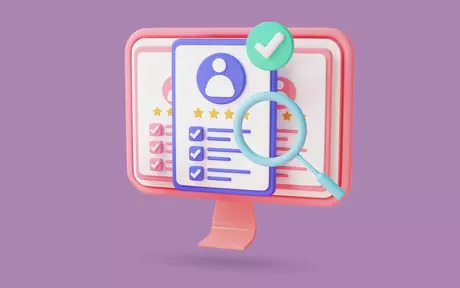
How can planning software benefit your finance and operations team?
Effective planning can support improved decision-making by helping your organization strike the right balance between forecasting resource levels and market demand. It can be challenging - because it requires significant data input from the entire organization.
Effective planning also requires an analysis of everything from trends in your pipeline and service requests to the evolving environment in which your customers might be operating. This is analyzed alongside the seasonal and HR data that lets you match your people and their skills to the needs of the people you serve.
Click to read FP&A product brochure - blog - FG
How does planning differ from forecasting?
Forecasting is part of the full financial planning process. It involves the analysis of internal and external data to predict your likely requirements over a particular period - usually 12 to 24 months. However, this might vary depending on your particular forecasting approach. Your forecast forms the bedrock of your planning cycle, providing a best guess of resources you’ll likely need over a given period. It relies on data from across your organization. Forecast accuracy and integrity are vital if it is to support the planning process.
Effective planning starts with the finance, sales, operations, HR, and project teams within your organization but will ultimately need to include virtually every part of the business - making communication and collaboration an essential component of your success.
What tools do planning analysts use?
Planning is a dynamic process, and there’s rarely a “right tool for the job.” Generally speaking, organizations will use their system of record - usually their ERP system - and specific time-series forecasting software, among others, to create their plans. However, there are many standalone planning solutions, and ERP and FP&A software now often incorporate planning capabilities as a core part of their functionality.
Spreadsheets, specifically Excel, can be commonly used by those in operational planning roles. This can cause issues, as Excel is essentially a personal productivity tool that was not designed to support large-scale demand planning. Challenges also occur when users find it difficult to get insights from multiple Excel sources.
Excel's greatest benefits can be considered its primary weak spots. Intended as an individualized spreadsheet to assist accountants in managing and calculating specified data sets, its design segregates information. It was never devised to facilitate collaborative efforts across an organization. When multiple functions across a company utilize different Excel models to provide and assemble input data, it becomes difficult to determine the veracity and freshness of the data.
Excel's requirements can be significant. Personnel who depend on Excel expend significant amounts of energy in tracking, revising, amalgamating, and assessing distinct documents.
The versatility and feature set of Excel can also be problematic. Unique formulas formulated by one person may not be intelligible to another and are susceptible to becoming dysfunctional. Resulting in the frustration of non-operational vlookups, loop references, #div/0, cell format errors, and inaccurate or missing figures.
Planning software, when used alongside or instead of Excel, helps you forecast demand and plan how you make use of your people accordingly, so you always have the resources you need to staff any project that comes your organization’s way.
Planning software is an essential tool every business that provides services needs to ensure they’re making the best use of their most valuable resource - their people’s time.
The right planning software can help your finance team to more accurately forecast resource needs across the entire organization, ensuring that operational and capital expenses can be fully optimized to ensure projects are profitable and your people are well utilized.
In this article, we’ll be exploring some of the biggest.
1. Effective project planning and staffing
Ensure you always have resources with the correct skillsets available when your client’s projects require them by forecasting future demand and staffing with upcoming needs in mind to prevent project bottlenecks and burnout before it happens. Inefficient project staffing not only reduces your overall project profitability, but it can also lead to decreased engagement and higher staff turnover, cumulatively costing your company much more than just short-term income.
Your ability to deliver a quality service to your clients depends on having the right people available to solve their problems at the right time. Properly planning your resources to match demand is vital in ensuring both client satisfaction and project profitability.
2. Improving utilization rates and reducing bench time
You can also use your planning solution to reduce the amount of time your fee-earning service providers spend waiting for work - and reduce the costs associated with under-utilization. You can accomplish this by optimizing your staffing levels to account only for the work which is likely to come your way, controlling payroll costs, and optimizing staff engagement in the process.
The importance of keeping utilization rates high (but not too high) should be obvious: the more your people are working, the more they’re adding to your bottom line, and the less you’re losing on unnecessary salary burn. Your finance team can, therefore, correctly scope your likely salary costs and resource needs and more accurately forecast revenues and EBITDA with the help of a solid demand planning solution.
3. Changes and adjustments
Advanced modern software solutions that permit dynamic changes provide the advantage of foreseeing any upcoming difficulties. They also recommend methods of taking action in advance, which enables your teams to handle unexpected issues before they have a disruptive impact on your ability to fulfill projects.
For instance, if there is an unanticipated increase in demand for a certain service, it is possible to detect the trend early on and staff up adequately. This will enable you to meet the demand on time, without having to urgently search for suitable contractors when it is already too late.
A reliable supply chain can experience issues now and then, but having the flexibility to adjust delivery schedules as required, prevents running out of resources, even in the most adverse circumstances.
4. A single source of truth - regardless of circumstances and location
Good planning software makes it possible to coordinate your resources across global operations and projects. Since planning is an activity that involves several different business functions, it’s already likely that the people handling the process will be based in different locations or working on a hybrid basis out of different sites. Many complex projects now take advantage of international teams to provide access to scarce skills, meaning you will likely need to coordinate resources working in multiple different countries, time zones, and regulatory environments.
The right planning software can radically simplify this process by reducing the need to move data between systems, keeping information up to date, and improving accuracy and reliability by reducing instances of human error.
How can Unit4 help you improve forecasting?
Unit4 has been creating enterprise software systems for project and people-centric organizations for over 40 years. Our FP&A solution is a full financial planning and analysis suite that unifies your business’s financial data streams to help you create more accurate financial forecasts and flexible scenario plans and provides a rock-solid foundation for your planning process. Combined with our modern cloud-based ERP, HCM, and PSA systems, it can consolidate data from across your entire organization to ensure accurate and flexible approaches to every aspect of financial planning. To see what our solution can do for you, click here to visit our dedicated FP&A product page or click here to book a demo.





